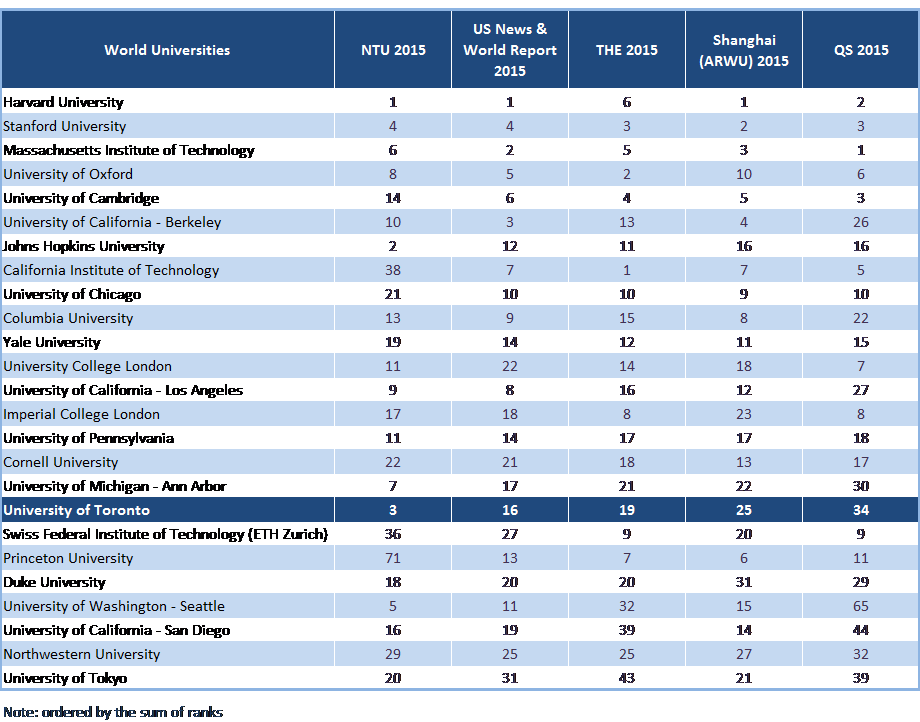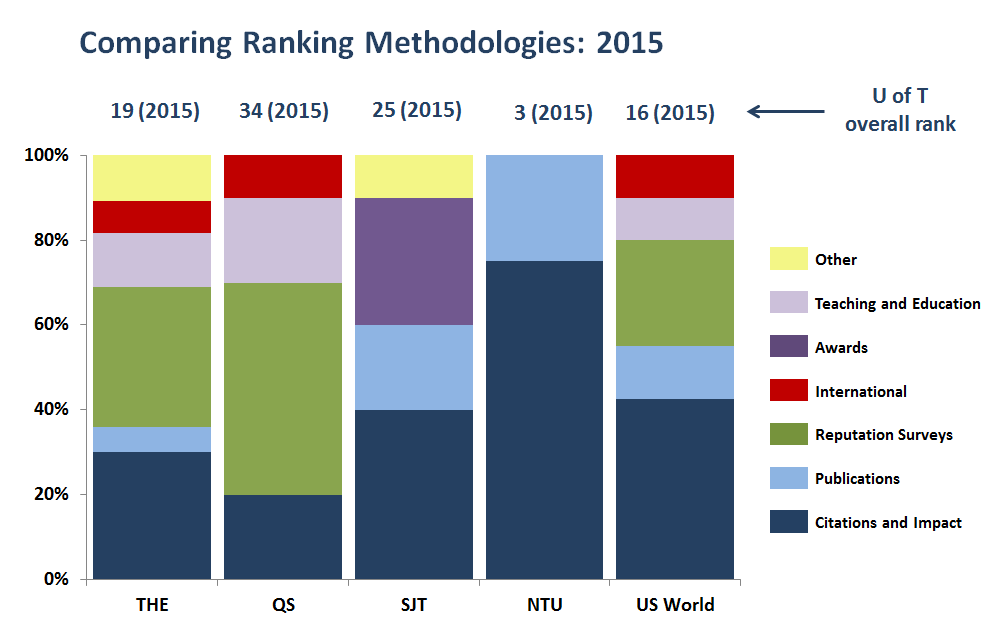International Rankings Explained (2015)
International rankings are only one measure of our excellence. Ranking results should be supplemented with other measures of quality and research output and impact.
How do we rank?
The following are the five major international rankings of global universities:
- Times Higher Education World Rankings (THE)
- QS World University Rankings
- Shanghai Academic Ranking of World Universities (ARWU)
- National Taiwan University Ranking (NTU)
- US News & World Report Best Global Universities Ranking
TOP 25 INTERNATIONAL INSTITUTIONS

THE UNIVERSITY OF TORONTO’S FIELD RANKINGS RESULTS
![]()
THE UNIVERSITY OF TORONTO’S 2015 SUBJECT RANKING RESULTS
![]()
How does U of T use ranking results?
The University uses ranking results as a demonstration of our excellence in teaching and research both locally and globally. Ranking results support the University’s efforts to tell our story when it comes to:
- Recruitment of faculty and students
- Advancement opportunities
- Advocacy with government officials
Why are there different results among the major rankings?
The results vary depending on the metrics included in each of the rankings. Each ranking organization assigns differing weights to various elements of their measures.
The following chart maps the metrics employed by each ranking into seven categories to provide a comparison of the similarities and differences among the methodologies:

Note: The compared rankings include:
- Times Higher Education World Rankings (THE)
- QS World University
- Shanghai Academic Ranking of World Universities (ARWU)
- National Taiwan University Ranking (NTU)
- US News & World Report Best Global Universities Ranking
What data is provided to the ranking organizations?
The vast majority of data underlying the ranking results is from third party data sources including bibliometric data and reputational and employer surveys conducted by the ranking organizations. Some data is provided by participating institutions to support calculation of the included metrics. Examples of such information include: enrolment, degrees awarded, and financial information.
How do faculty and staff members participate in rankings?
Three of the international rankings (QS, THE and US News & World Report) implement reputation surveys of academics as part of their ranking data-gathering. Responding to reputational surveys received from ranking organizations is an important way that individual faculty can be involved in shaping the results.
